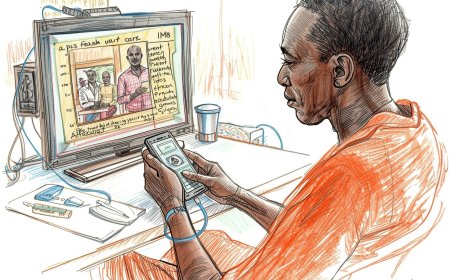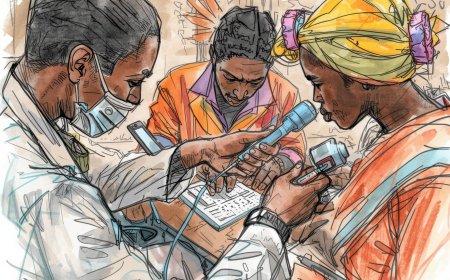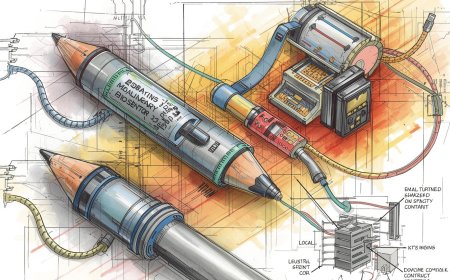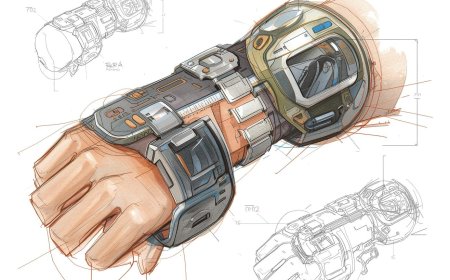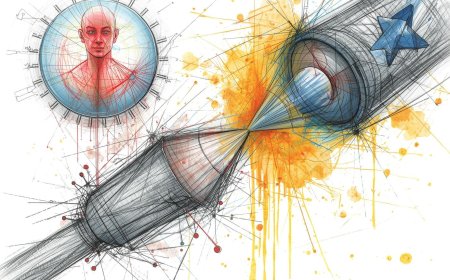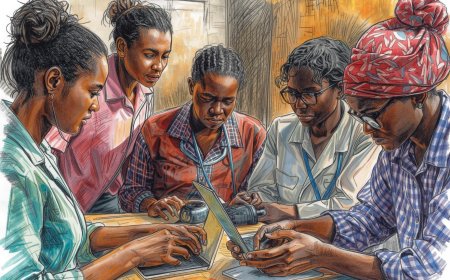Enhancing Collaboration Between African Startups and University Researchers: Practical Approaches to Knowledge Transfer & Research Commercialization
A strategic guide to bridging the gap between Africa's dynamic startup ecosystem and its academic research institutions. This article analyzes the systemic challenges—including funding gaps, cultural divides, and policy fragmentation—that hinder effective collaboration. It presents practical models for partnership, proven strategies for knowledge transfer and research commercialization, and a comparative analysis of national innovation policies in key African hubs. The piece offers actionable recommendations for universities, entrepreneurs, policymakers, and investors aiming to build a robust, knowledge-based economy across the continent.

Executive Summary
Bridging the gap between Africa's dynamic startup culture and its underleveraged academic research capacity is not merely an opportunity but a strategic imperative for sustainable, knowledge-based economic transformation. The continent's innovation landscape presents a paradox: a surge in entrepreneurial activity, largely focused on market-gap solutions, coexists with a formal research and development (R&D) sector that remains disconnected and underfunded. This report presents a comprehensive analysis of this disconnect, identifying the systemic challenges and proposing a multi-stakeholder action plan to foster effective collaboration between universities and startups. The core challenges are systemic, encompassing a dual crisis in R&D and venture funding, profound cultural and operational divides between academia and industry, and fragmented policy environments. To overcome these barriers, this report outlines practical models for collaboration, details the mechanisms of knowledge transfer and commercialization, and provides a comparative analysis of national innovation policies in key African hubs. The analysis culminates in a strategic blueprint with actionable recommendations for university leadership, entrepreneurs, policymakers, and investors, designed to unlock the powerful synergies between knowledge creation and market innovation, thereby strengthening Africa's innovation ecosystem and its global competitiveness.
1. The Innovation Imperative: Bridging Academia and Entrepreneurship in Africa
The future economic competitiveness of the African continent hinges on a fundamental transition from a resource-based to a knowledge-based economy. Central to this transformation is the creation of a robust innovation ecosystem where academic research fuels entrepreneurial ventures. Forging strong, symbiotic links between universities and startups is the primary engine that can drive this transition, converting intellectual capital into sustainable economic growth and societal impact.
1.1. The Economic Context: A Tale of Two Ecosystems
Africa's current innovation landscape is one of immense potential marked by a significant paradox. On one side, there is a vibrant and growing ecosystem of "growth-oriented technology startups" building "homemade" digital technologies that are disrupting major sectors like agriculture, retail, and services.1 This ecosystem is defined by a new generation of IT-savvy entrepreneurs and has attracted increasing, albeit volatile, investment.1
On the other side, universities are recognized as "epicentres of knowledge creation" holding the potential to drive groundbreaking technological advancements.3 Their role is evolving beyond the traditional mandate of knowledge transfer to becoming vital catalysts for nurturing skills, innovation, and the entrepreneurial spirit essential for economic progress.4 However, these two ecosystems largely operate in isolation. While digitalization is widely seen as a key to unlocking inclusive growth and accelerating job creation, this potential cannot be fully realized by universities or startups acting alone.5 The skills gap and the deep-tech solutions needed for Africa's digital revolution require a collaborative approach that merges academic rigor with entrepreneurial agility.5
1.2. Quantifying the Gap: An Analysis of R&D Investment, Patent Filings, and Commercialization Metrics
The "persistent disconnect" between academic research and its commercial application is quantifiable and stark.3 The data reveals a significant underinvestment in the foundational elements of a knowledge economy. Africa as a continent contributes just 0.1% of global patents and allocates a mere 0.45% of its GDP to research and development.3 This low level of investment is a clear indicator of untapped innovation potential and a primary reason why academic breakthroughs rarely translate into commercial products or services.
This issue is compounded by a systemic misalignment of priorities. In Kenya, for example, universities have been criticized for focusing on 'blue-sky' research that is perceived as having little relevance to immediate societal or industrial needs. Consequently, very few of the research innovations generated are formally protected through patents or commercialized.6 This points to a broader challenge where research is not yet widely integrated into national development strategies as a direct input for economic activity. The entire process of technology transfer—the mechanism for moving knowledge from the lab to the market—is described as being at an "infant stage" and "sparsely documented" in many African nations, despite growing efforts to drive national innovation systems.7
1.3. The Symbiotic Opportunity: Why Startups Need Deep Tech and Universities Need Market Pathways
Despite the gap, the potential for a symbiotic relationship is immense. For startups, collaboration with universities offers a powerful competitive advantage. It provides access to cutting-edge research, deep technical expertise, and specialized infrastructure like advanced laboratories and prototyping equipment, which are often prohibitively expensive for an early-stage company.8 This access allows startups to build more defensible, innovative, and technologically complex solutions, moving beyond the replication of existing business models to create truly disruptive products and services.10
For universities, the benefits are equally compelling. Collaboration provides a direct pathway for research to achieve tangible, real-world impact by solving pressing societal and industrial challenges.3 It also opens up new and sustainable revenue streams through technology licensing, faculty consulting, and the formation of joint ventures, which can help mitigate the impact of declining public subsidies.11 Furthermore, these partnerships create invaluable practical learning environments and employment opportunities for students, ensuring that academic curricula remain relevant to industry needs.8 Ultimately, by engaging directly with the market, universities enhance their societal position and demonstrate their relevance as engines of economic development.8
The current boom in African startups is largely driven by market-gap innovation in sectors like fintech and e-commerce, which capitalizes on existing inefficiencies. While successful, this model may face diminishing returns as the most obvious gaps are filled. The long-term sustainability and global competitiveness of the continent's tech ecosystem will depend on its ability to transition towards deep-tech, research-based innovation. This requires tapping into the knowledge generated within universities. Simultaneously, the operational timelines of startups, which demand speed and agility, are fundamentally at odds with the long-term cycles of academic research, which are governed by grant applications, peer review, and semester schedules.8 This temporal and cultural friction is a primary, structural cause of the disconnect, meaning that successful collaboration models must be explicitly designed with mechanisms to bridge this gap.
2. The Ecosystem Under a Microscope: Key Actors and Structural Gaps
To foster effective collaboration, it is essential to deconstruct the innovation ecosystem, identifying the roles of its key actors and the systemic failures and misalignments that impede progress. A clear diagnosis of these structural gaps is the first step toward designing effective interventions.
2.1. Mapping the Landscape: Universities, Startups, Government, Investors, and Intermediaries
The African innovation ecosystem is composed of several key actors whose interactions, or lack thereof, define its effectiveness. Theoretical frameworks like the Triple Helix model provide a useful lens, positing that a healthy ecosystem is driven by the dynamic interplay of three core spheres: universities, which are responsible for knowledge creation; industry (including startups), which handles commercialization; and government, which provides regulation and strategic support.8 In addition to these primary actors, a fourth category of intermediaries has emerged as crucial "connective tissue" in a fragmented landscape. These include pan-African networks like AfriLabs 16, incubators and accelerators like Villgro Africa 17, and specialized programs like CcHUB's SUPARTech 3, which actively work to bridge the gaps between the other stakeholders.
2.2. Diagnosing the Disconnect: A Systematic Analysis of Core Challenges
Despite the presence of these actors, collaboration remains underdeveloped due to a series of interconnected challenges that create systemic friction.
-
Funding Constraints: The ecosystem is plagued by a dual funding crisis. On one hand, universities suffer from chronically low public investment in R&D, which limits their capacity to produce commercially viable research.3 On the other hand, Africa's venture capital (VC) landscape is underdeveloped and notoriously risk-averse, with a strong preference for business-model innovations over capital-intensive deep tech.10 This creates a "valley of death" where promising research languishes due to a lack of early-stage funding to validate and prototype it, and viable prototypes fail to secure scale-up capital.
-
Human Capital and Cultural Gaps: A significant cultural and skills divide separates academia from industry. University curricula are often criticized as being outdated and overly theoretical, failing to equip students with the practical, problem-solving, and entrepreneurial skills demanded by the modern economy.13 This is exacerbated by limited economic and business literacy among some faculty members.19 Conversely, industry players are often reluctant to engage with universities, citing concerns about bureaucratic inflexibility and slow processes. Many private sector firms, particularly small and medium-sized enterprises (SMEs), also lack a culture of budgeting for R&D, making them hesitant to invest in collaborative projects.4
-
Intellectual Property (IP) and Regulatory Hurdles: The management of intellectual property is a major point of friction. Ambiguous or non-existent IP policies, coupled with differing objectives, create significant barriers. Universities are often driven by the incentive to publish research findings, while companies need to protect proprietary information to maintain a competitive edge.4 Furthermore, rigid academic policies and bureaucratic red tape within university administrations can stifle innovation and discourage both faculty and potential industry partners.18
-
Structural and Institutional Weaknesses: The ecosystem lacks sufficient "soft infrastructure." There are few formal, dedicated platforms for communication and collaboration between academia and industry.4 As a result, many Memorandums of Understanding (MoUs) are signed with great ceremony but lead to no tangible outcomes because they lack specific, actionable deliverables and a framework for execution.22 University outreach and community engagement efforts are often described as "undefined and unsupported," with unclear objectives and limited impact.4
These challenges are deeply intertwined. The lack of public R&D funding leads to fewer deep-tech innovations, which in turn gives risk-averse VCs even less to invest in. The resulting scarcity of successful deep-tech exits sends a market signal back to universities that there is little reward for prioritizing commercializable research, creating a vicious cycle. The solution, therefore, cannot be a singular focus on either R&D funding or venture capital but requires a holistic strategy that addresses both the supply of innovation and the demand for it.
2.3. The Human Capital Equation: Skills Mismatch, Brain Drain, and the Need for Entrepreneurial Acumen in Academia
At the heart of the innovation ecosystem is human capital, and here too, significant challenges persist. The most frequently cited problem is the mismatch between the skills graduates acquire in university and those required by industry.13 This gap is a direct consequence of limited collaboration, as curricula are developed without sufficient input from employers.
This skills gap contributes to a brain drain, as the lack of high-caliber, specialized jobs for highly skilled postgraduates often compels them to seek opportunities overseas.9 This depletes the very talent pool that is essential for building a sophisticated, knowledge-based economy. To reverse this trend, universities must evolve beyond their traditional missions of teaching and research to embrace a "third mission" focused on economic development and societal engagement.6 This requires a profound cultural shift within academia, encouraging faculty to engage in applied research, consulting, and entrepreneurship, and developing the institutional support structures to enable them to do so.
3. Models for Meaningful Collaboration: Frameworks and Real-World Applications
Moving from problem analysis to solution exploration, several effective models for university-startup collaboration are emerging across the continent. These range from theoretical frameworks that guide strategy to practical, on-the-ground initiatives that are actively bridging the gap between academia and entrepreneurship.
3.1. Theoretical Underpinnings: Applying the Triple Helix and Open Innovation Models
Two key theoretical frameworks provide a robust foundation for understanding and structuring collaboration. The Triple Helix Model serves as the foundational concept, envisioning a healthy innovation ecosystem as a product of the dense, overlapping interactions between three institutional spheres: universities (as knowledge creators), industry (as commercializers), and government (as regulators and enablers).8 This model emphasizes that innovation is not a linear process but emerges from the dynamic, co-evolutionary relationships between these actors.
Complementing this is the Open Innovation Theory, which provides an operational model for how these interactions occur. University-industry partnerships are a classic example of "outside-in" open innovation, where firms purposefully use external ideas and knowledge—in this case, from university researchers—to accelerate their internal innovation processes.8 This framework helps both startups and universities to strategically manage the flow of information across their organizational boundaries for mutual benefit.
3.2. Programmatic Interventions: Structured Platforms for Engagement
Several organizations are translating these theories into structured, replicable programs that facilitate collaboration.
-
Case Study: CcHUB's SUPARTech Program (Nigeria): Co-creation HUB Africa's SUPARTech program is a prime example of an intermediary-led initiative designed to catalyze meaningful partnerships.3 It employs a clear, four-phase approach:
-
Public Awareness Campaign: Educating stakeholders on the value of university-startup partnerships.
-
Capacity-Building Workshops: Training researchers and startups on collaboration models, IP management, and commercialization strategies.
-
Startup–Researcher Matchmaking: Facilitating strategic connections to co-develop viable solutions.
-
Documentation of Success Stories: Showcasing positive outcomes to inspire further collaboration.
This structured model directly addresses key challenges such as a lack of awareness, skills gaps, and the difficulty of finding suitable partners.3
-
Case Study: The AgriENGAGE Project (Pan-African): This European Commission-funded project, involving eight African universities, focuses on stimulating agri-entrepreneurship. Its experience highlights several critical lessons: the need to find the right balance between theory and practice, the central role of practical learning and incubation, and the necessity of both public support and deep industry involvement.19 It also underscores persistent challenges, such as the lack of adequately trained teaching staff and limited resources for practical courses and incubation hubs.23
3.3. Network-Based Approaches: Fostering Cross-Institutional Knowledge Sharing
Building networks that span multiple institutions allows for the pooling of resources and the sharing of best practices, creating a more resilient and dynamic ecosystem.
-
Case Study: The Afretec Network (Pan-African): Led by Carnegie Mellon University Africa, the African Engineering and Technology Network (Afretec) is a pan-African collaboration of technology-focused universities.5 Its model is built on deep collaboration in three key areas: teaching and learning, knowledge creation, and entrepreneurship, all aimed at driving Africa's inclusive digital transformation.5 By operating as a network, Afretec can fund large-scale, multi-university research teams to tackle complex challenges aligned with the UN Sustainable Development Goals, such as developing low-cost biotechnologies or digital tools for malaria control.25
-
Case Study: Alliance of Entrepreneurial Universities in Africa: Launched in 2022, this alliance aims to promote and nurture entrepreneurship within and beyond university campuses, setting ambitious goals such as creating one million startups and generating $100 billion in revenue.26 The alliance highlights the critical role of enabling government policies, such as Morocco's Law 01-00 and South Africa's Intellectual Property Rights Act, which have empowered universities to establish incubators and commercialize their innovations.26
3.4. International Partnerships: Leveraging Global Expertise and Resources
When local industry is not yet robust enough to support advanced research, forming global partnerships can be a powerful strategy to inject capital, expertise, and world-class institutional models.22
-
Case Study: Imperial Global Ghana: Imperial College London's establishment of a permanent, science-focused hub in Accra is a landmark model of international collaboration.27 It goes beyond simple project funding to build deep, long-term partnerships between West African institutions and the UK. The hub actively supports local innovators by working with initiatives like the UNDP's Timbuktoo fund and is launching prestigious fellowships in high-impact fields like AI and climate science. This demonstrates a commitment to building sustained local capacity.27
-
Case Study: U.S.-Kenya Higher Education Partnership Program: This program, funded by the U.S. Embassy in Nairobi, explicitly seeks to create long-term, sustainable partnerships between U.S. and Kenyan higher education institutions.28 The focus is on joint initiatives in technology research, development, and private-sector job growth, demonstrating how international diplomacy can be leveraged to build local innovation capacity.28
A common thread among the most successful of these models is the presence of a third-party "orchestrator"—an entity like CcHUB, CMU-Africa, or Imperial College—that provides structure, builds trust, and absorbs the administrative burden that often derails direct collaborations. These orchestrators build the crucial "soft infrastructure" for the ecosystem. Furthermore, these international collaborations do more than just provide resources; they import established, world-class processes for knowledge transfer and commercialization, creating a powerful demonstration effect that can help local institutions accelerate their own capacity development.
Table 1: Collaboration Models Matrix
|
Model Type |
Description |
Key Benefits for Startup |
Key Benefits for University |
Primary Challenges/Risks |
Resource Intensity |
|
Guest Lectures/Student Projects |
Industry experts deliver lectures; students work on real-world problems provided by startups. |
Low-cost access to fresh ideas and potential talent pipeline. |
Curriculum enrichment with practical relevance; enhanced student experience. |
Limited depth of engagement; inconsistent quality of student work. |
Low |
|
Internships/Placements |
Students work at a startup for a defined period, applying academic knowledge. |
Access to affordable, skilled labor; opportunity to vet potential hires. |
Stronger graduate employability; direct feedback loop from industry. |
High administrative overhead; potential for student exploitation if not well-managed. |
Low to Medium |
|
Faculty Consulting |
Academics provide expert advice to startups on a contractual basis. |
Access to specialized, high-level expertise for specific technical challenges. |
New revenue stream for faculty and university; direct application of research. |
Potential conflicts of interest; balancing with academic duties. |
Medium |
|
Contract Research |
A startup pays the university to conduct a specific R&D project with defined deliverables. |
Outsourced R&D without high capital investment in labs/equipment. |
Significant source of research funding; solves real-world problems. |
IP ownership must be clearly defined; results may not meet commercial timelines. |
Medium to High |
|
Joint R&D Projects |
Startup and university researchers collaborate as partners on a research project, sharing costs and risks. |
Shared R&D costs; deep integration of expertise; potential for breakthrough innovation. |
Access to market insights and commercialization expertise; long-term partnership. |
Complex IP negotiations; aligning different cultures and timelines is difficult. |
High |
|
Technology Licensing |
A startup acquires the rights to use a university-owned patent or technology in its products. |
Exclusive or non-exclusive access to proven, defensible technology. |
A primary channel for research commercialization; generates royalty income. |
Finding a licensee can be difficult; licensed tech may require significant further development. |
Medium |
|
University Spin-off |
A new company is formed specifically to commercialize a university's intellectual property. |
Direct access to foundational IP; strong ties to the source of innovation. |
Potential for high financial return through equity; significant impact story. |
High risk; requires significant institutional support and entrepreneurial talent. |
High |
|
Joint Venture |
The university and a startup (or other company) form a new, jointly owned entity. |
Shared risk and investment; access to university brand and resources. |
Direct involvement in commercialization; potential for significant financial returns. |
Very complex legal and governance structures; high potential for conflicts. |
Very High |
4. The Knowledge Transfer Playbook: From Laboratory to Market
Effective knowledge transfer is the operational core of university-industry collaboration. It requires dedicated structures, clear strategies for managing intellectual property, and a spectrum of engagement mechanisms. The Technology Transfer Office (TTO) serves as the central nervous system for this entire process.
4.1. The Modern Technology Transfer Office (TTO): From Compliance to Brokerage
In the African context, particularly in South Africa where they are most established due to the IPR Act, TTOs are the designated units responsible for managing the university's intellectual property.29 Their core functions include overseeing the IP disclosure process, evaluating the commercial potential of inventions, managing the patenting process, and executing commercialization agreements.29
However, for these offices to be truly effective, they must evolve beyond a passive, administrative role focused on legal compliance. The most successful TTOs operate as proactive, market-facing "innovation brokerages." Their mission is not just to protect IP but to actively "bridge the gap between innovation and impact".33 This requires a strategic shift towards actively scouting for commercial opportunities, building deep relationships with industry partners, and nurturing an entrepreneurial culture within the university. This evolution is often hampered by significant challenges, including a lack of staff with both technical and commercial skills, and an institutional culture that prioritizes traditional academic outputs like teaching and publications over commercialization activities.21 The effectiveness of the entire commercialization pipeline hinges on the capabilities of these TTO professionals, who must be "bilingual"—fluent in the languages of both academic research and commercial enterprise.
4.2. Intellectual Property Strategy: Navigating Patents, Licensing, and Open Models
A clear and strategic approach to intellectual property is fundamental. The traditional pathway involves the university patenting an invention and then licensing the technology to an existing company or a new spin-off in exchange for fees and/or royalties.11 In South Africa, the Intellectual Property Rights from Publicly Financed R&D (IPR-PFRD) Act provides the key regulatory framework that governs this process, mandating that publicly financed institutions protect and attempt to commercialize their IP.9
However, commercialization is not limited to patent licensing. A comprehensive strategy should also include creating joint ventures, launching university-owned spin-off companies, and offering high-value consultancy services.11 A critical strategic decision involves navigating the inherent tension between the academic imperative to publish and disseminate knowledge and the commercial need for secrecy to protect a competitive advantage.8 While patent protection is often necessary to attract investment for capital-intensive technologies, in other cases, open-source models may be more effective for driving widespread adoption, building a community around a technology, and achieving societal impact.
4.3. A Spectrum of Engagement: From Informal Links to Formal Partnerships
Collaboration is not a single activity but a continuum of interactions, each with its own value and level of intensity. Building a robust relationship often involves starting with less formal engagements and progressing toward more strategic partnerships.
-
Informal and Low-Intensity Engagement: These activities are crucial for building trust and identifying areas of mutual interest. They include guest lectures by industry professionals, student theses and capstone projects that tackle real-world industry problems, and informal networking at conferences and workshops.13
-
Formal and High-Intensity Engagement: As trust and alignment grow, collaborations can become more formal and strategic. This can range from short-term, deliverable-focused contract research and consulting to long-term, ambitious joint R&D projects, participation in multi-stakeholder consortiums, and personnel exchanges.13 A particularly effective but underutilized mechanism is the faculty sabbatical in industry, which allows academics to gain deep market insights while providing companies with access to expert knowledge.9
While formal IP agreements are the legal backbone of knowledge transfer, the process is fundamentally human. The most effective transfer of knowledge, particularly the tacit "know-how" that cannot be easily codified in a patent document, occurs through the movement of people. Student internships, faculty consulting, and staff exchanges are the primary channels through which deep knowledge is shared and absorbed.9 Therefore, policies and programs should prioritize funding and facilitating the mobility of talent between academia and industry, recognizing that this is where the most valuable exchange often takes place.
5. Cultivating University-Born Ventures: The Path to Commercialization
The most intensive and potentially transformative form of university-industry collaboration is the creation of new ventures—startups and spin-offs—based on university research. This requires a dedicated support infrastructure to nurture nascent ideas from the laboratory into sustainable businesses.
5.1. Nurturing Innovation: The Function of University Incubators, Accelerators, and Science Parks
To support the creation of new ventures, universities across Africa are establishing a range of physical and programmatic infrastructures.
-
University-Based Incubators and Accelerators: These programs are becoming increasingly common, offering a structured environment for student and faculty entrepreneurs. They provide essential resources such as seed funding, expert mentorship, legal and business support, and co-working space.18 Notable examples include the University of Ghana's Student Venture Support Programme (SVSP) 36 and Carnegie Mellon University-Africa's Industry Innovation Lab, which provides funding and technical expertise to help students commercialize their ideas.36
-
Science and Technology Parks (STPs): These are larger-scale real estate developments, often adjacent to a university campus, designed to create a physical cluster of knowledge-based companies.37 By co-locating startups, established firms, and university research facilities, STPs aim to foster a dynamic environment of collaboration and knowledge spillover. Examples on the continent include the University of Nairobi Science and Technology Park in Kenya 38, the Lion Science Park affiliated with the University of Nigeria 39, and the Science Park, Innovation, and Incubation Centre at MMUST in Kenya.40 They provide not only physical space but also a suite of business support services and facilitate direct access to university research capabilities.38
In emerging markets characterized by high information asymmetry and "institutional voids"—gaps in financing, mentorship, and legal infrastructure—these university-affiliated programs play a critical role beyond direct support. They act as powerful market signalers, with graduation from a reputable university accelerator serving as a credible stamp of quality that helps startups attract follow-on funding from investors.2 The value of these programs lies less in the physical real estate and more in the curated community, structured programming, and reputational validation they provide.
5.2. The University Spin-off: Creation, Support, and Sustainability
A university spin-off is a new company created specifically to commercialize intellectual property that has emerged from university research.21 The process typically involves the university's TTO licensing the foundational IP to the new entity, often in exchange for an equity stake. Despite the high potential of this model, few universities in Africa have successfully and consistently created spin-offs.41
The challenges are significant and systemic. They include organizational inefficiencies and bureaucratic hurdles within universities, limited resources for early-stage product development, and a lack of entrepreneurial experience among academic founders.41 The experience in South Africa, which has the continent's most developed framework for spin-offs, demonstrates that even when these companies are successfully created, sustaining them is exceptionally difficult due to fragile and underdeveloped support networks.42 Key success factors identified in the South African context include strong institutional support for research mobilization, a culture that encourages external collaboration, and a tolerance for unconventional, cross-disciplinary approaches.41
5.3. Lessons from the Field: Analyzing Successes and Failures
Examining real-world outcomes provides invaluable, practical lessons for the entire ecosystem.
-
Success Stories: Several universities have demonstrated the potential to generate revenue and impact through entrepreneurial ventures. The University of Nairobi's Enterprises and Services (UNES) and the University of Zambia's ventures, such as ZAMNET Communications, are pioneering examples of universities successfully capitalizing on their assets and research outputs.26 More recently, Moi University in Kenya has established an incubation center and several enterprises, including the Rivatex East Africa textile manufacturer, showcasing a commitment to commercialization.43
-
Cautionary Tales from South Africa: A detailed longitudinal study of three high-technology spin-offs from South African universities offers critical, sobering insights into the fragility of the ecosystem.42
-
Case 1 (Virtual Software): This venture failed to even get off the ground, primarily due to a complete absence of networks connecting the university research group to the industrial sector.
-
Case 2 (Bioinformatics): This spin-off achieved significant initial success, buoyed by strong government support and university networks. However, this success was short-lived. The firm ultimately faltered due to a misalignment with the demands of the global market and critical failures in internal coordination.
-
Case 3 (Micro-satellite): This was the most successful of the three, with strong internal capabilities and alignment. Yet, its long-term viability was severely threatened by external factors: a misalignment with a key global supplier and fragile, unreliable support networks within government agencies.
The South African cases reveal a crucial lesson: a spin-off can have excellent technology, a strong team, and initial support, but it can still fail if the broader ecosystem is not robust. This "ecosystem fragility" risk is a defining challenge for deep-tech ventures in emerging markets. The success of a spin-off is not solely dependent on its own merits but is a function of the health and density of the entire national system of innovation. A single weak link in the chain—a supplier, a government agency, a key customer—can cause the entire enterprise to collapse. This means that investors and policymakers must adopt a portfolio approach, investing not just in individual companies but in strengthening the entire surrounding ecosystem.
6. The Policy Lever: A Comparative Analysis of National Strategies
Governments across Africa play a pivotal role in shaping the environment for university-startup collaboration. An analysis of the policy approaches in four of the continent's key innovation hubs—Kenya, Nigeria, South Africa, and Rwanda—reveals distinct philosophical models for fostering a knowledge-based economy.
6.1. Kenya: Building a Framework with the Startup Bill
Kenya's strategy is centered on creating a formal regulatory framework through its Startup Bill, 2022.44 The bill's stated objectives are to encourage innovation, facilitate technology transfer, and explicitly promote linkages between universities, research institutions, and the business community.44 Key mechanisms include the establishment of a Registrar of Startups, the creation of a government-backed Startup Fund, and the formalization of incubation programs.44 The policy leverages existing bodies like the Kenya National Innovation Agency (KeNIA) and the National Research Fund to support these goals.46
However, the bill contains controversial elements that highlight the risks of poorly designed regulation. The requirements for startups to be at least 51% Kenyan-owned and to dedicate 15% of expenses to R&D have been widely debated.45 The local ownership rule, intended to foster local control, directly conflicts with the funding reality of Africa's most successful startups, which rely heavily on foreign venture capital for scaling. This clause risks alienating the very investors the ecosystem needs to grow. These regulatory efforts are complemented by large-scale infrastructure projects like the Konza Technopolis ("Silicon Savanna") and strategic digital partnerships with global tech companies.47
6.2. Nigeria: A Multi-Pronged Approach to Digital Economy
Nigeria has adopted a partnership-heavy, sector-focused model centered on building a digital economy. The cornerstone of this approach is the National Digital Innovation, Entrepreneurship and Startup Policy (NDISEP), which is built on five priority pillars: Advancing Human Capital, Unlocking Access to Capital, Enabling Infrastructure, Boosting Demand, and Promoting Innovative Entrepreneurship.49
Implementation is driven by key agencies, particularly the National Information Technology Development Agency (NITDA), which has been instrumental in establishing innovation hubs and supporting large-scale skills initiatives like the Three Million Technical Talent (3MTT) program.49 There is a strong emphasis on public-private partnerships, with the government actively collaborating with both local corporations (e.g., IHS Nigeria's funding of university innovation hubs) 51 and global tech giants (e.g., Google's partnership on the AI Government Campus to train civil servants).52 A key part of the strategy is to create domestic demand for technology by modernizing public administration and building a digitally fluent civil service.52
6.3. South Africa: A Mature but Evolving System
South Africa possesses the continent's most mature and legally grounded innovation system. A foundational piece of legislation is the Intellectual Property Rights from Publicly Financed R&D Act (IPR Act) of 2008, which provides a clear framework for the ownership and commercialization of IP generated from public research and mandated the establishment of Technology Transfer Offices at universities.9
The Department of Science and Innovation (DSI) is the central coordinating body, managing a wide array of funding instruments and incentives.53 Recently, it partnered with the UNDP to launch the Higher Education Innovation Fund (HEIF), a new fund aimed at stimulating a culture of entrepreneurship in universities and colleges.54 South Africa also strategically leverages international partnerships, particularly its participation in the EU's Horizon Europe program, to access significant funding and cutting-edge expertise.55 The policy focus is on strengthening existing institutions, building regional STI capacity within the Southern African Development Community (SADC), and addressing historical inequalities through targeted support programs.12
6.4. Rwanda: A Vision-Driven, Top-Down Approach
Rwanda's approach is highly strategic, centralized, and driven by a long-term national vision. Policies are explicitly aligned with ambitious national development plans like Vision 2050, which positions scientific and technological innovation as the central pillar for transforming Rwanda into a high-income nation.56
This top-down vision is translated into institutional action. The University of Rwanda, for instance, has developed its own comprehensive Research and Innovation Policy and Innovation Policy Strategy, which are meticulously aligned with national goals and designed to create a cohesive innovation ecosystem within the university itself.57 The government is also driving flagship infrastructure projects, most notably the Kigali Innovation City (KIC). KIC is a large-scale public-private partnership conceived as a pan-African technology hub that will co-locate world-class universities, startup incubators, accelerators, and established tech companies.59 This model uses strong, clear government vision to de-risk private investment and aims to build a complete, integrated innovation ecosystem from the ground up.
Table 2: Comparative Analysis of National Innovation Policies
|
Policy Dimension |
Kenya |
Nigeria |
South Africa |
Rwanda |
|
Key Legislation/Policy |
Startup Bill, 2022 |
National Digital Innovation, Entrepreneurship and Startup Policy (NDISEP) |
IPR from Publicly Financed R&D Act, 2008 |
Vision 2050; Entrepreneurship Development Policy (EDP) |
|
IP Rights Framework |
Addressed in Startup Bill; general IP laws. |
National IP Policy; focus on digital innovation protection. |
Highly structured via IPR Act; managed by TTOs. |
University-level innovation policies; national IP laws. |
|
Key Government Agencies |
Kenya National Innovation Agency (KeNIA) |
National Information Technology Development Agency (NITDA) |
Department of Science and Innovation (DSI); NIPMO |
Rwanda Development Board (RDB); Ministry of ICT & Innovation |
|
Public Innovation Funds |
Startup Fund (proposed); National Research Fund. |
Various grants via NITDA, SMEDAN; N-IVE initiative. |
Higher Education Innovation Fund (HEIF); TIA Seed Fund; multiple DSI grants. |
Research and Technology Development Fund (proposed). |
|
Key Incentives |
Fiscal/non-fiscal incentives for registered startups (proposed). |
Tax incentives; government patronage of digital products. |
R&D tax incentives; various sectoral grants (e.g., Agro-Processing, Automotive). |
Focus on creating a conducive business environment; incentives for KIC tenants. |
|
University-Specific Mandates |
Promote linkages with business community. |
Emphasis on 60:40 STEM student ratio. |
Mandated to establish TTOs and commercialize IP under IPR Act. |
University policies explicitly aligned with national development goals (NST1, Vision 2050). |
7. A Blueprint for Action: Strategic Recommendations for Stakeholders
Translating analysis into action requires a coordinated effort from all actors in the ecosystem. The following recommendations provide a practical roadmap for universities, startups, governments, and investors to unlock the full potential of collaboration.
7.1. For University Leadership
-
Institutional Reform: Prioritize innovation by establishing a senior leadership position, such as a Vice-Chancellor or Deputy VC for Innovation & Entrepreneurship, with dedicated budget authority. Transform TTOs from administrative compliance offices into proactive "Innovation Brokerages" staffed with commercially experienced professionals who can bridge the gap between academia and industry.
-
Incentive Structures: Fundamentally reform academic career progression. Modify tenure and promotion criteria to officially recognize and reward patenting, licensing, the creation of spin-off companies, and industry consulting with the same weight as traditional research publications.
-
Curriculum Development: Integrate practical, hands-on entrepreneurship education across all faculties, not just in the business school.18 Forge deep partnerships with industry players to co-develop curricula, ensuring graduates possess the skills the market demands and directly addressing the skills mismatch.13
-
Create "Porous" Boundaries: Actively facilitate the flow of people and ideas between campus and industry. Establish and fund programs for faculty sabbaticals in industry 9, and create "Entrepreneur-in-Residence" and "VC-in-Residence" programs to bring invaluable market expertise and networks directly onto campus.
7.2. For Startup Founders and Entrepreneurs
-
Proactive Engagement: Do not wait for universities to initiate contact. Actively scan university research publications, attend academic conferences in relevant fields, and engage with TTOs to identify intellectual property and expertise that could provide a competitive advantage.
-
Start Small to Build Trust: Build relationships incrementally. Before committing to large, complex R&D contracts, engage in lower-risk collaborations. Sponsoring a final-year student project, hiring interns, or engaging a faculty member for a short-term consulting project can be effective ways to test compatibility and build trust.15
-
Leverage Intermediaries: Utilize the growing network of intermediary organizations. Engage with innovation hubs like CcHUB 3 or pan-African networks like AfriLabs.16 These organizations often have established relationships with universities and can provide structured pathways, introductions, and support for navigating collaborative projects.
7.3. For Government and Policymakers
-
Adopt a "Dual Funding" Strategy: Address the interconnected funding crises simultaneously. Increase direct public funding for foundational R&D within universities to expand the pipeline of new discoveries. Concurrently, establish and capitalize co-investment funds, similar to South Africa's HEIF 54, to de-risk private VC investment into capital-intensive, deep-tech university spin-offs.
-
Invest in the "Soft Infrastructure": Prioritize funding for the intermediary organizations—the "orchestrators"—that build the connective tissue for the entire ecosystem. Support the creation of standardized legal templates for IP sharing, licensing, and joint venture agreements to reduce friction, time, and legal costs for both universities and startups.
-
Policy Co-Creation: Ensure that all innovation-related policies, especially legislation like Startup Acts, are developed in deep and continuous consultation with the entrepreneurs, investors, and academics they are intended to support. This will prevent the inclusion of counterproductive clauses, such as Kenya's restrictive 51% local ownership rule, that are misaligned with the operational realities of the ecosystem.45
-
Government as a Key Customer: Use public procurement as a powerful tool to stimulate innovation. Implement "cloud-first" policies 48 and other procurement frameworks that create a stable, predictable domestic market for innovative products and services from local startups, including university spin-offs.49
7.4. For Investors and Venture Capital
-
Develop Deep-Tech Expertise: To effectively evaluate and support research-heavy ventures, build internal technical capacity or establish partnerships with a network of scientific and technical experts who can assist with due diligence.
-
Partner with TTOs and Accelerators: Move beyond passive deal flow. Establish formal, strategic partnerships with the most effective university TTOs and accelerators to gain early and preferential access to a curated pipeline of high-potential, pre-vetted spin-offs and student-led startups.2
-
Adopt a "Patient Capital" and "Ecosystem-Building" Mindset: Recognize that deep-tech ventures require longer development timelines and different support structures than typical software startups. Mitigate the "ecosystem fragility" risk 42 by adopting a broader investment thesis. Consider investing not just in individual companies but also in the enabling infrastructure, such as funding a specialized university accelerator or a fellowship for tech transfer professionals, which will generate a stronger pipeline of future deals.
Table 3: Stakeholder Action Plan
|
Stakeholder Group |
Key Challenge Addressed |
Recommended Action |
Key Performance Indicator (KPI) |
|
University Leadership |
Institutional Inertia & Misaligned Incentives |
Appoint a VP for Innovation; reform tenure criteria to reward commercialization. |
Number of patents filed, licenses executed, spin-offs created; amount of industry-sponsored research funding. |
|
TTO Managers |
Lack of Commercial Skills & Proactive Engagement |
Restructure TTO as a market-facing "Innovation Brokerage"; hire staff with business/VC experience. |
Number of industry partnerships initiated; average time from invention disclosure to licensing/spin-off. |
|
Faculty/Researchers |
Disconnect from Market Needs |
Participate in industry externships; engage in consulting; mentor student startups. |
Number of industry collaborations; consulting revenue generated; number of students placed in industry. |
|
Startup Founders |
Access to Deep Technology & Expertise |
Proactively engage TTOs; start with small-scale projects (e.g., internships) to build relationships. |
Number of university-sourced technologies integrated; number of joint projects initiated. |
|
Government Policymakers |
Dual Funding Crisis & Counterproductive Regulation |
Implement dual funding (R&D + VC co-investment); co-create policies with the ecosystem. |
% of GDP spent on R&D; amount of private capital matched by public funds; growth in deep-tech startup formation. |
|
Investors/VCs |
Lack of Deep-Tech Deal Flow & Ecosystem Fragility |
Partner with TTOs/accelerators for curated deal flow; adopt a "patient capital" and ecosystem-building approach. |
Number of deep-tech investments made; survival rate of portfolio spin-offs; ROI on ecosystem-level investments. |
Works cited
-
Digital Africa: How Big Tech and African Startups Are Reshaping the Continent, accessed October 24, 2025, https://www.giga-hamburg.de/en/publications/giga-focus/digital-africa-how-big-tech-and-african-startups-are-reshaping-the-continent
-
African Startup Accelerators: How University Partnerships Signal Venture Quality and Drive Funding Growth amid Capital Scarcity - Preprints.org, accessed October 24, 2025, https://www.preprints.org/manuscript/202509.2330/v1
-
Bridging Innovation and Impact: Introducing the SUPARTech Program - Co-creation HUB Africa (CcHUB), accessed October 24, 2025, https://cchub.africa/bridging-innovation-and-impact-introducing-the-supartech-program/
-
Unlocking the potential of university-industry ... - AgriEngage, accessed October 24, 2025, https://agriengage.org/sites/ruforum.dd/files/sassi-mshenga-2024-unlocking-the-potential-of-university-industry-collaborations-in-african-higher-education-a.pdf
-
About Afretec - Carnegie Mellon Engineering, accessed October 24, 2025, https://engineering.cmu.edu/afretec/about/index.html
-
Commercialization Models of University Research Output and Patenting Policy Practices in Kenya - ResearchGate, accessed October 24, 2025, https://www.researchgate.net/publication/366106117_Commercialization_Models_of_University_Research_Output_and_Patenting_Policy_Practices_in_Kenya
-
Perspectives of University-Industry Technology Transfer in African Emerging Economies: Evaluating the Nigerian Scenario via a Data Envelopment Approach - MDPI, accessed October 24, 2025, https://www.mdpi.com/2076-0760/8/10/286
-
(PDF) UNIVERSITY-INDUSTRY COLLABORATIONS - ResearchGate, accessed October 24, 2025, https://www.researchgate.net/publication/388485197_UNIVERSITY-INDUSTRY_COLLABORATIONS
-
Industry Collaboration | Research Contracts and Innovation - University, accessed October 24, 2025, https://uct.ac.za/rci/articles/2024-04-15-university-industry-collaboration
-
(PDF) Unicorn Dreams: Challenges Faced by African Startups in Achieving Billion-Dollar Valuations - ResearchGate, accessed October 24, 2025, https://www.researchgate.net/publication/384063982_Unicorn_Dreams_Challenges_Faced_by_African_Startups_in_Achieving_Billion-Dollar_Valuations
-
The Commercialisation of University Research Outputs: A Review of Literature - Texila International Journal, accessed October 24, 2025, https://www.texilajournal.com/thumbs/article/Management_Vol%208_Issue%202_Article_12.pdf
-
Seven universities applauded for advancing research ... - News, accessed October 24, 2025, https://news.mandela.ac.za/News/Seven-universities-applauded-for-advancing-researc
-
(PDF) Transforming higher education in Africa through university-industry collaboration, accessed October 24, 2025, https://www.researchgate.net/publication/368262720_Transforming_higher_education_in_Africa_through_university-industry_collaboration
-
Industry-Government-Academia Collaboration | Sophia University, accessed October 24, 2025, https://www.sophia.ac.jp/eng/research/sankangaku/
-
Barriers and facilitators of university-industry collaboration for research, development and innovation: a systematic review - PMC - NIH, accessed October 24, 2025, https://pmc.ncbi.nlm.nih.gov/articles/PMC10132443/
-
AfriLabs: Home, accessed October 24, 2025, https://www.afrilabs.com/
-
Villgro Africa • AI for Global Health Research, accessed October 24, 2025, https://ai-globalhealthresearch.tghn.org/partners/villgro-africa/
-
From Lecture Halls to Boardrooms: How African Universities are Nurturing Entrepreneurs, accessed October 24, 2025, https://scholarmedia.africa/africa/from-lecture-halls-to-boardrooms-how-african-universities-are-nurturing-entrepreneurs/
-
From syllabi to startups: lessons from eight African case studies on university-industry collaboration and agri-entrepreneurship education - ResearchGate, accessed October 24, 2025, https://www.researchgate.net/publication/395284244_From_syllabi_to_startups_lessons_from_eight_African_case_studies_on_university-industry_collaboration_and_agri-entrepreneurship_education
-
From syllabi to startups: lessons from eight African case studies on university-industry collaboration and agri-entrepreneurship education - Frontiers, accessed October 24, 2025, https://www.frontiersin.org/journals/sustainable-food-systems/articles/10.3389/fsufs.2025.1572898/epub
-
Commercialization of higher education institutions' research within ..., accessed October 24, 2025, https://www.tandfonline.com/doi/pdf/10.1080/20421338.2017.1338387
-
5 ways to strengthen university-industry collaboration in Africa ..., accessed October 24, 2025, https://www.weforum.org/stories/2023/05/africa-university-industry-collaboration/
-
From syllabi to startups: lessons from eight African case ... - Frontiers, accessed October 24, 2025, https://www.frontiersin.org/journals/sustainable-food-systems/articles/10.3389/fsufs.2025.1572898/full
-
lessons from eight African case studies on university-industry collaboration and agri-entrepreneurship education - Frontiers, accessed October 24, 2025, https://www.frontiersin.org/journals/sustainable-food-systems/articles/10.3389/fsufs.2025.1572898/pdf
-
$3.3 million awarded to advance digital technology in Africa - Carnegie Mellon Engineering, accessed October 24, 2025, https://engineering.cmu.edu/news-events/news/2023/05/12-inclusive-digital-transformation.html
-
3rd Forum of the Alliance of Entrepreneurial Universities in Africa | Events, accessed October 24, 2025, https://www.uneca.org/eca-events/3rd-forum-alliance-entrepreneurial-universities-africa
-
Imperial opens hub in Ghana with a commitment to boost scientific collaboration, accessed October 24, 2025, https://www.imperial.ac.uk/news/258253/imperial-opens-ghana-with-commitment-boost/
-
View Grant Opportunity - Search Results Detail | Grants.gov, accessed October 24, 2025, https://grants.gov/search-results-detail/354965
-
Office Of Technology Transfer | University of Venda, accessed October 24, 2025, https://www.univen.ac.za/research/office-of-technology-transfer/
-
Technology Transfer Office | UWC, accessed October 24, 2025, https://www.uwc.ac.za/campus-life/resources/technology-transfer-office
-
Technology Transfer Office - CUT, accessed October 24, 2025, https://www.cut.ac.za/tto
-
Directorate of Innovation, Technology Transfer and Commercialisation - Unisa, accessed October 24, 2025, https://www.unisa.ac.za/sites/corporate/default/Research-&-Innovation/Innovation,-Technology-Transfer-and-Commercialisation
-
Technology Transfer Office - University of Limpopo, accessed October 24, 2025, https://www.ul.ac.za/about-us/community-engagement/tto/
-
Innovation & Technology Transfer – SARIMA, accessed October 24, 2025, https://www.sarima.co.za/resources/innovation-technology-transfer/
-
(PDF) University Knowledge Transfer and Its Associated Challenges for Sustainable Impact: Case of the University of Rwanda - ResearchGate, accessed October 24, 2025, https://www.researchgate.net/publication/370800687_University_Knowledge_Transfer_and_Its_Associated_Challenges_for_Sustainable_Impact_Case_of_the_University_of_Rwanda
-
How African Universities Support Student Startups - Tech In Africa, accessed October 24, 2025, https://www.techinafrica.com/how-african-universities-support-student-startups/
-
Universities and Science Park based Technology Incubators, accessed October 24, 2025, http://www.warwicksciencepark.co.uk/wp-content/uploads/2011/03/UniversitiesandScienceParkbasedTechnologyIncubators.pdf
-
University of Nairobi Science & Technology Park - IASP, accessed October 24, 2025, https://www.iasp.ws/our-members/directory/@415101/university-of-nairobi-science-and-technology-park
-
Lion Science Park - IASP, accessed October 24, 2025, https://www.iasp.ws/our-members/directory/@470669/lion-science-park
-
Home - MMUST, accessed October 24, 2025, https://sciencepark.mmust.ac.ke/
-
Academic spin-offs in an African emerging market context, accessed October 24, 2025, https://www.researchgate.net/publication/384945604_Academic_spin-offs_in_an_African_emerging_market_context
-
(PDF) Knowledge-Intensive University Spin-off Firms in South Africa ..., accessed October 24, 2025, https://www.researchgate.net/publication/47279340_Knowledge-Intensive_University_Spin-off_Firms_in_South_Africa_Fragile_Network_Alignment
-
EAC Universities Talk Commercialisation of Research and Innovation, accessed October 24, 2025, https://ace2.iucea.org/index.php/eac-universities-talk-commercialisation-of-research-and-innovation
-
14-The startup Bill, 2022 formatted - Parliament of Kenya, accessed October 24, 2025, https://parliament.go.ke/sites/default/files/2023-02/The%20Startup%20Bill%2C%202022.pdf
-
Kenya's Startup Bill: A Launchpad or a Lockdown for Entrepreneurs? - iBizAfrica, accessed October 24, 2025, https://ibizafrica.strathmore.edu/kenyas-startup-bill-a-launchpad-or-a-lockdown-for-entrepreneurs/
-
Commercialization - Kenya National Innovation Agency, accessed October 24, 2025, https://www.innovationagency.go.ke/storage/pub-docs/ken_pub_IS-Phase-II-Final-Report-August-2023_Updated.pdf
-
Mapping the Innovation Ecosystem in Kenya - United Nations Development Programme, accessed October 24, 2025, https://www.undp.org/sites/g/files/zskgke326/files/2022-12/SUMMARY-Mapping%20Innovation%20Report.pdf
-
Microsoft and G42 announce $1 billion comprehensive digital ecosystem initiative for Kenya, accessed October 24, 2025, https://news.microsoft.com/source/2024/05/22/microsoft-and-g42-announce-1-billion-comprehensive-digital-ecosystem-initiative-for-kenya/
-
Digital Economy: NITDA Launches Policy To Leverage Digital Innovation, Entrepreneurship, accessed October 24, 2025, https://nitda.gov.ng/digital-economy-nitda-launches-policy-to-leverage-digital-innovation-entrepreneurship/4801/
-
Government Support Programs for Nigerian Startups in 2025, accessed October 24, 2025, https://mocaccountants.com/government-support-programs-for-nigerian-startups-in-2025/
-
Local Innovation, Global Impact: IHS Nigeria's Support for African ..., accessed October 24, 2025, https://punchng.com/local-innovation-global-impact-ihs-nigerias-support-for-african-tech-talent-and-startups/?amp
-
Nigeria Launches AI Government Campus to Train Civil Servants in Artificial Intelligence, accessed October 24, 2025, https://iafrica.com/nigeria-launches-ai-government-campus-to-train-civil-servants-in-artificial-intelligence/
-
Support for innovation in South Africa - HSRC, accessed October 24, 2025, https://hsrc.ac.za/innovation-support-in-south-africa/
-
UNDP and DSI launch new fund to support university tech entrepreneurs, accessed October 24, 2025, https://www.dsti.gov.za/index.php/media-room/latest-news/4219-undp-and-dsi-launch-new-fund-to-support-university-tech-entrepreneurs
-
Fostering collaboration between academic institutions, industries and international partners through science, technology and innovation, accessed October 24, 2025, https://www.dsti.gov.za/index.php/media-room/latest-news/4428-fostering-collaboration-between-academic-institutions-industries-and-international-partners-through-science-technology-and-innovation
-
Entrepreneurship Development Policy - minicom, accessed October 24, 2025, https://www.minicom.gov.rw/fileadmin/user_upload/Minicom/Publications/Policies/Entrepreneurship_Development_Policy_-_EDP.pdf
-
research and innovation - University of Rwanda, accessed October 24, 2025, https://ur.ac.rw/IMG/pdf/research_and_innovation_policy04292920240924110645.pdf
-
ur innovation policy and strategy - University of Rwanda, accessed October 24, 2025, https://ur.ac.rw/img/pdf/innovation_policy_strategy01475720201019085012.pdf
-
The Government of Rwanda, Africa50 and BADEA break ground on the construction of Kigali Innovation City (KIC), accessed October 24, 2025, https://rdb.rw/the-government-of-rwanda-africa50-and-badea-break-ground-on-the-construction-of-kigali-innovation-city/
-
The Government of Rwanda, Africa50 and BADEA break ground on the construction of Kigali Innovation City (KIC) - MINICT, accessed October 24, 2025, https://www.minict.gov.rw/news-detail/the-government-of-rwanda-africa50-and-badea-break-ground-on-the-construction-of-kigali-innovation-city-kic
What's Your Reaction?
 Like
0
Like
0
 Dislike
0
Dislike
0
 Love
0
Love
0
 Funny
0
Funny
0
 Angry
0
Angry
0
 Sad
0
Sad
0
 Wow
0
Wow
0

















